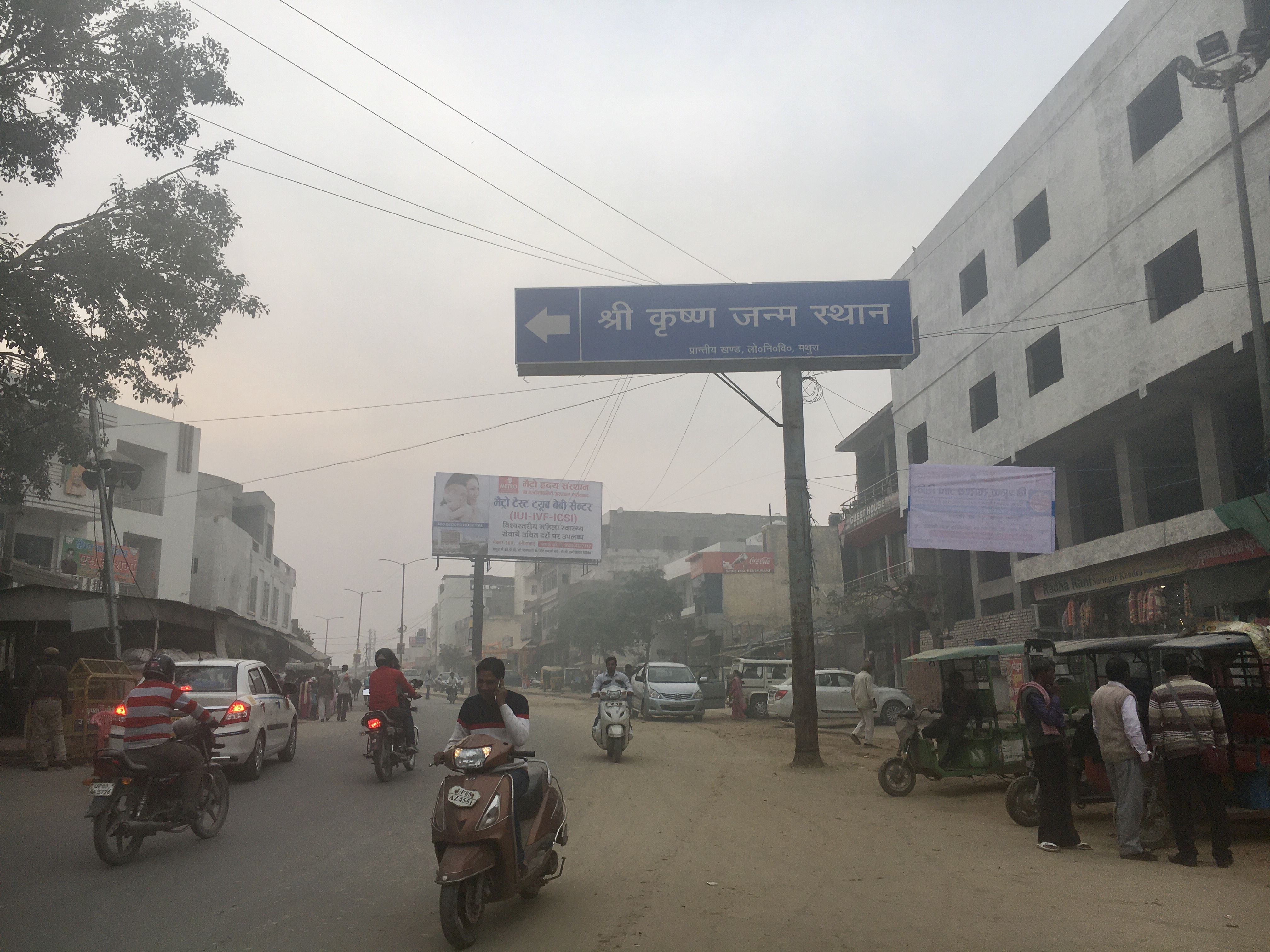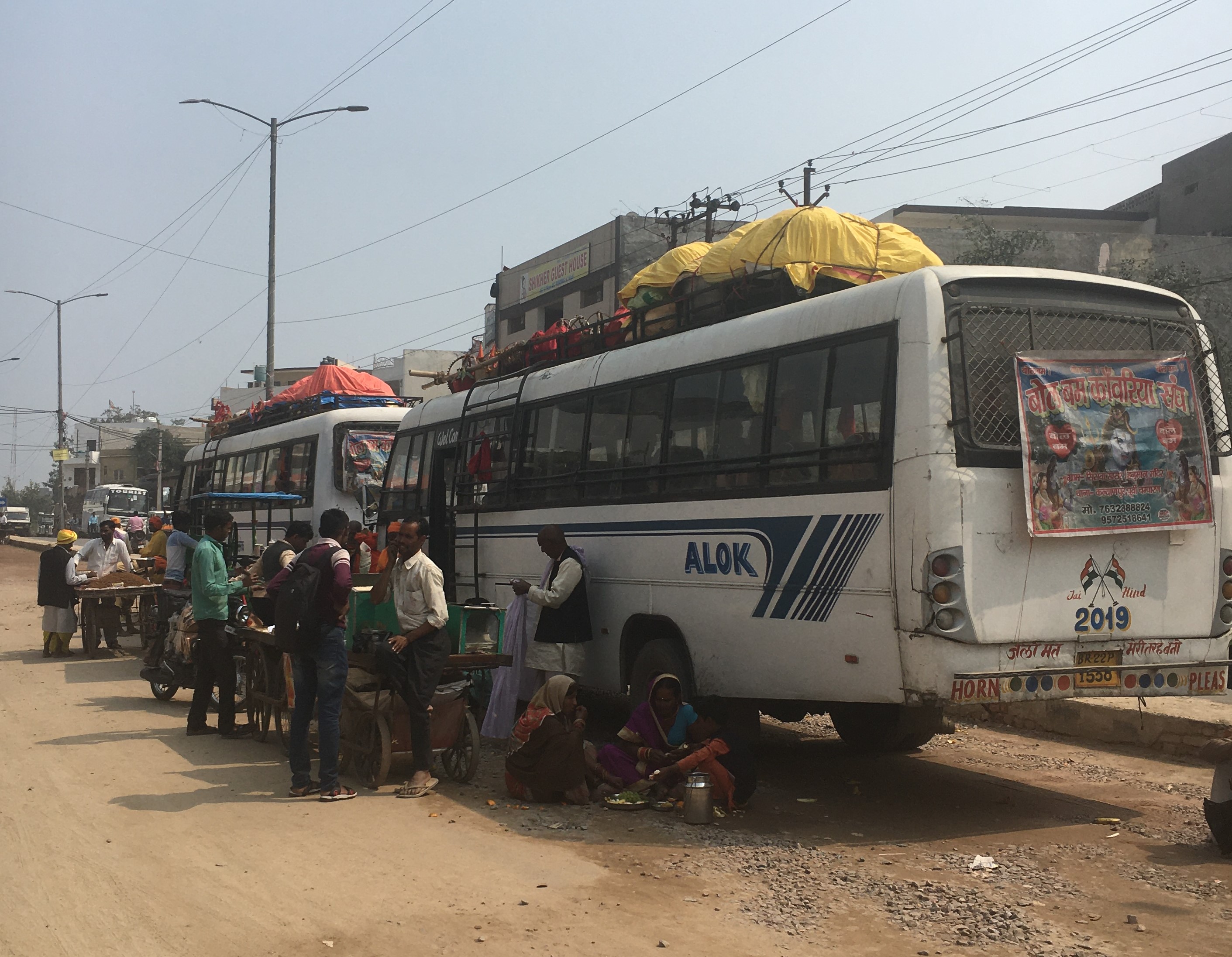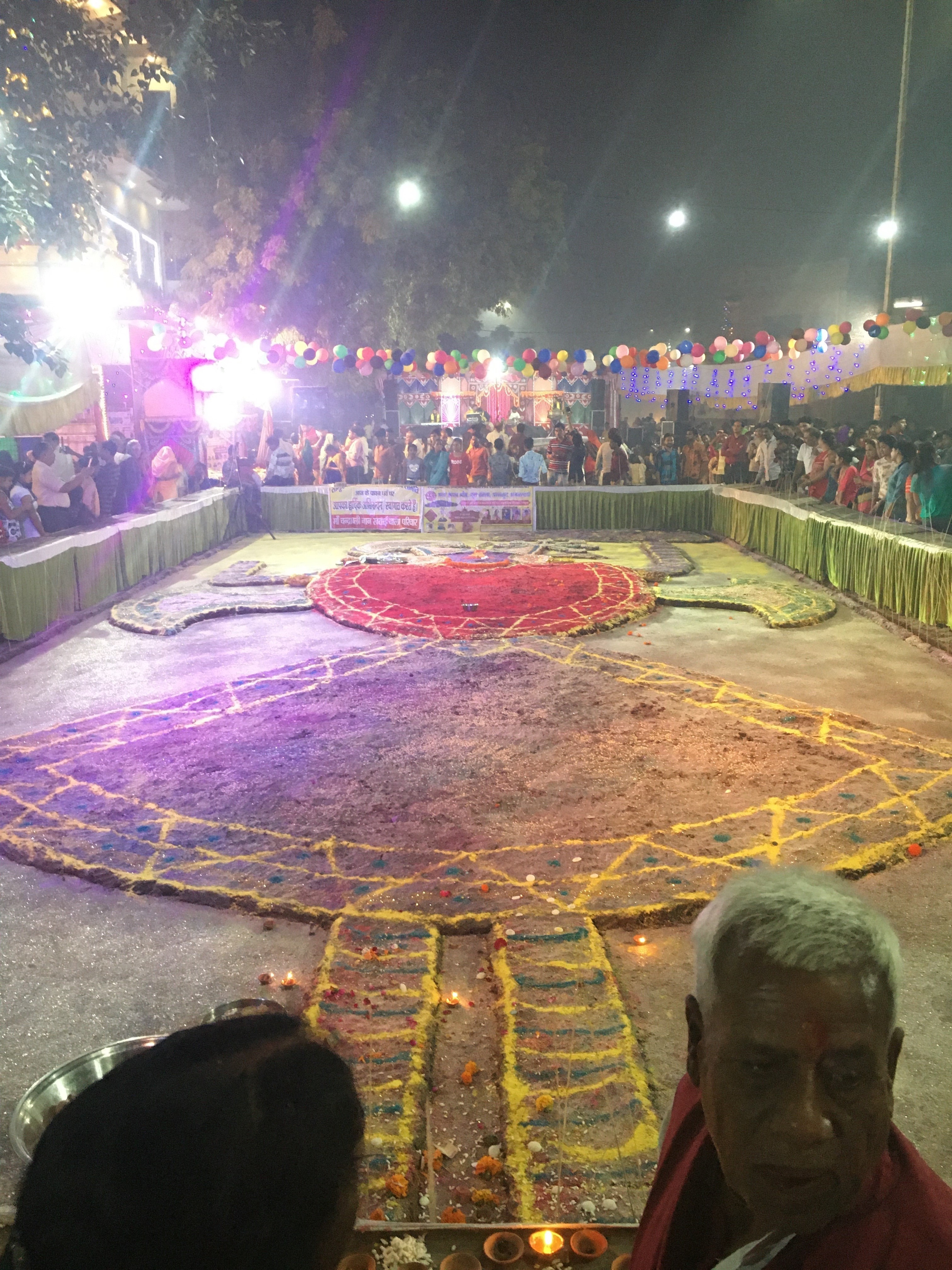Govind Nagar
Mathura
Govind Nagar is a bustling neighborhood that reflects Mathura’s status as a pilgrimage city. Many of the shops and roadside carts sell items identifiable to Hindus as sr̥ṁgāra, pertaining to the ornamentation of household shrines and deities. From east to west, the main artery of Govind Nagar connects the Mathura-Vrindavan road to the residential gully that leads to gate three of the Krishna Janmsthan, the dirt road that culminates at the Jawahar Vidyalaya Inter College, the southbound street to the Potra Kund (along the way offering a market alleyway that takes one to the Janmsthan’s gate number two), and the northwestern continuation of Mathura’s parikrama mārg (which passes by the rāmlīlā maidān before bending east). This east-west road is habitually clogged with tour buses, which arrive from Gujarat, West Bengal, Rajasthan, and, of course, Delhi, ferrying the pilgrims who will exacerbate the congestion by their foot traffic to and from the Janmsthan. For the majority of my time in Govind Nagar, a beige haze floated in the air, no doubt the consequence of traffic upon several unpaved roads, frequent road construction (repairs to the neighborhood’s sewer lines), and toxic exhaust belched from the oldest generations of tour buses passing through.
Several sounds and smells characterize Govind Nagar. Although they roam the area in full force during the day, choruses of barking dogs and screeching monkeys often choose the third watch for their vocal performances. Their whoops and shouts are only rivaled by the clamor of wedding celebrations, and processions that emanate from Hotel Greenland, on the main road. The sunlit hours are instead filled with vehicle horns and the shrill whistles of plastic pan flutes, sold as souvenirs to pilgrims by eager peddlers on the roadside.
A large number of cows lazily wander the side streets and even the main road, and younger ones occasionally announce their right of way in tones that rival those of the scooters and rickshaws. These bovine residents contribute a barnyard scent to the air, which otherwise stings of vehicle exhaust and the occasional whiff of an open sewer. A single-gauge railway track connects the Krishna Janmsthan to Vrindavan, and this track passes right through the eastern edge of Govind Nagar. Once in a blue moon, the “toot” of an ambling single-car passenger train will compete with the vehicles waiting to cross the tracks. Otherwise, this rail line is the territory of bleating goats and donkeys being led to and from the Shahi Idgah. For all of this hubub, there are several quite peaceful hours of the morning when you can hear the birds sing, joined for a verse or two by a passing vegetable seller as he raises his cry.
Govardhan Puja Mela
The evening after Diwali, Govind Nagar celebrates the annakūṭ (“mountain of food”) festival, otherwise called Govardhan Puja, with largesse: Krishna as giridhārī, or the “mountain-lifter,” is rendered in cow dung on a massive scale (over 2000 ft2). Barricaded on four sides by tables hung with posters, in the manner of an urban ice rink, Krishna may be the central attraction, but he is not the only one. Just past Mount Govardhan, which is held up by Krishna’s left hand (some say by just his little finger), a temporary temple has been erected, brimming with nothing other than a mountain of food – a literal hill of rice surrounded by vegetables and sweets of all sorts. Further still, a stage with live musicians provides festive dhol and harmonium rhythms to the bustling locals and pilgrims. At Krishna’s feet, an inflatable slide, a far-too-rapidly spinning Ferris wheel, and a row of toy vendors prompt children to beggar their parents for play. A long line leads to free food set out on serve-yourself tables along Krishna’s left flank, and this food is prasād, having been offered to Krishna during the afternoon pūjā.
The event is quite the sight. But how is it funded? Who organizes it? Reports from locals suggest that it is a neighborhood-sponsored event, for volunteers had made door-to-door rounds throughout Govind Nagar to collect the money necessary for the festival. One gentleman, staring wistfully toward the melā from a popular tea stall on the main road, speculated that the enterprising individual who organized the fundraising efforts may well have skimmed some profit from the top of the donation pool – there would have been no shortage of money. As if to assure me that he would never dream of such embezzlement, this man declared that honest people would use excess donations to buy and distribute free toys to the children. I cannot but wonder if that was wishful thinking on the part of a parent whose generosity recently left a toy-sized hole in his wallet.
Inter College
The Jawahar Vidyalaya Inter College is top-ranked among nearly one hundred other semi-government-funded secondary schools in the district of Mathura, and happens also to have offered the Gayatri Pariwar’s Bharatiya Sanskriti Gyan Pariksha (BSGP) as an optional exam in 2018. Established in 1947 by Brajmohan Lal Agrawal, who named the secondary school after his father, Jawahar Lal Agrawal, the inter college currently serves around 1900 students from 6th to 12th standard. The inter college campus is spacious: a wide courtyard is flanked by a long row of classrooms on the left and by administrative offices on the right. The center of the courtyard features a small temple, likely enshrining Saraswati, goddess of knolwedge, alongside busts of the school’s founder and his father. A large field, also part of the campus extends behind the row of classrooms. Although some of the white paint has chipped off of the exteriors of the buildings, the inter college grounds appear tidy and well-maintained.
Conversations with faculty and staff suggest that around 400 students took part in the BSGP, and 90% of those were attracted by the chance to win awards (in the form of a certificate, small memento, or even cash prize) for scoring highly. This is not to say that student interest brought the exam to Jawahar Vidyalaya; rather, it was the District Inspector of Schools, a government official responsible for hundreds of schools in the Mathura district, that sanctioned the BSGP at the inter college. I asked Jayprakash, the teacher who proctored the BSGP at the school, if he thought the exam was beneficial for students. Perhaps because all of the decision-making regarding the exam happened either above or below teachers’ noses – either by district administrators or students – he shrugged his shoulders in response: “Any exam that takes place through the inter college has merit for students, but the [long-term] benefits of the Gyan Pariksha have yet to be seen.” 1
- Conversation with Jayprakash, Jawahar Vidyalaya Inter College, Nov. 23, 2019. ↩


